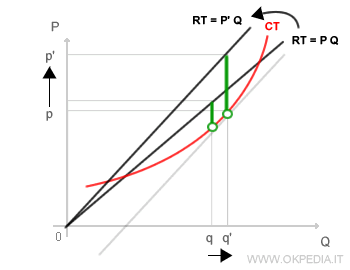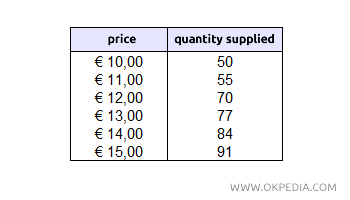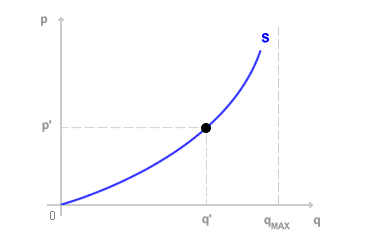Law of Supply
The law of supply is an economic principle based on empirical observation, which states that there is a direct, positive relationship between the price of a good and the quantity supplied.
The higher the price of a good, the greater the quantity supplied, and vice versa.

This means that price (P) and quantity supplied (Qs) are positively correlated.
Why Supply Increases with Price
The direct link between quantity supplied and price arises from the principle of profit maximization.
In a competitive market, a firm maximizes its profit when the price equals the marginal cost (the cost of producing one additional unit).

When the market price rises (P'), it creates an opportunity for the firm to increase profit, as the marginal cost is now lower than the price.

Note: As the price increases (P'), the firm's total revenue (TR = P'Q) grows, along with its profit (TR - TC). However, this situation no longer represents the maximum attainable profit, meaning the firm is no longer operating at an optimal level.
To maximize the gap between revenue (TR) and costs (TC), the firm must increase production of the good.

As production rises (Q'), so does the marginal cost.
This process continues until the marginal cost aligns with the market price once again.

At this point, the firm returns to maximizing the difference between revenue and costs, thus optimizing its profit.
Note: If the market price falls, the reverse happens. The firm reduces production, causing the marginal cost to drop until it matches the lower price.
The Supply Schedule
The direct relationship between price and quantity allows for the collection of empirical data on the supply of a good.
By measuring the quantity supplied at different price levels, a data set is created.

This data can be organized into a table (supply schedule) where each quantity supplied corresponds to a specific price.
Note: The supply schedule can also be represented graphically on a Cartesian plane.
Graphing Supply on a Cartesian Plane
The law of supply is visually represented on a Cartesian plane.
The price (P) is plotted on the vertical axis, while the quantity supplied (Q) is plotted on the horizontal axis.
The graphical representation of the supply schedule is known as the supply curve.

The supply curve depicts the relationship between the quantity supplied and the price of a good in the short run.
Note: The supply curve provides a static and partial representation, as it does not account for dynamic factors that may influence supply, such as production capacity, technological advancements, or the prices of complementary goods and substitute goods, among other external factors.
In the short run, production capacity (qMAX) is assumed to be fixed for a firm or industry.
In the long run, however, technological improvements and production capacity can change.
As a result, the long-run supply curve differs from the short-run supply curve.
